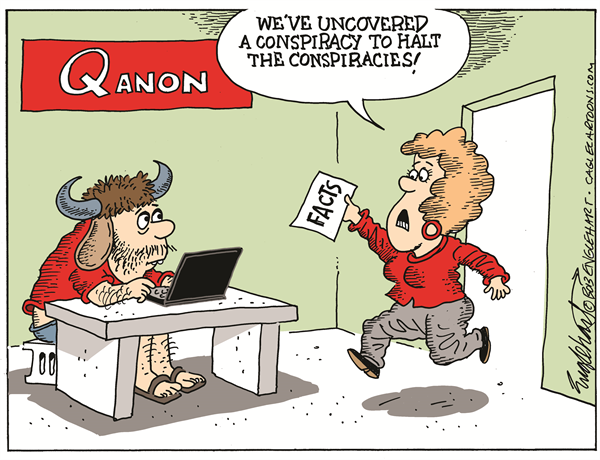Overconfidence in news judgement and false news susceptibility
University of Utah
A new study published in Proceedings of National Academics of Sciences finds that individuals who falsely believe they are able to identify false news are more likely to fall victim to it. In the article, Ben Lyons, assistant professor of communication at the University of Utah, and his colleagues examine the concern about the public's susceptibility to false news due to their inability to recognize their own limitations in identifying such information.
"Though Americans believe confusion caused by false news is extensive, relatively few indicate having seen or shared it," said Lyons.
"If people incorrectly see
themselves as highly skilled at identifying false news, they may unwittingly be
more likely to consume, believe and share it, especially if it conforms to
their worldview."
Lyons and his
colleagues used two large nationally representative surveys with a total of
8,285 respondents. Individuals were asked to evaluate the accuracy of a series
of Facebook headlines and then rate their own abilities to discern false news
content. Lyons used these two measures to assess overconfidence among
respondents and how it is related to beliefs and behaviors.
"Our
results paint a worrying picture. Many people are simply unaware of their own
vulnerability to misinformation."
The vast
majority of respondents -- about 90 percent -- reported they are above average
in their ability to discern false and legitimate news headlines. Three in four
individuals overestimated their ability to distinguish between legitimate and
false news headlines and respondents placed themselves 22 percentiles higher
than their score warranted, on average. About 20 percent of respondents rated
themselves 50 or more percentiles higher than their score warranted.
"Using data measuring respondents' online behavior, we show that those who overrate their ability more frequently visit websites known to spread false or misleading news. These overconfident respondents are also less able to distinguish between true and false claims about current events and report higher willingness to share false content, especially when it aligns with their political leanings."
Prior research suggests it may be individuals' lack of skill itself that drives engagement with false news and finds that people who are worse at discerning between legitimate and false news are worse at doing so in their browsing habits.
However, Lyons' analysis also shows that inflated perceptions of ability are
independently associated with engaging with misinformation, suggesting the
perceptual gaps are an additional source of vulnerability.
These results
provide new evidence of an important potential mechanism by which people may
fall victim to misinformation and disseminate it online. Although the design does
not identify the causal effect of overconfidence, these findings suggest that
the mismatch between one's perceived ability to spot false stories and people's
actual abilities may play an important and previously unrecognized role in the
spread of false information online.
